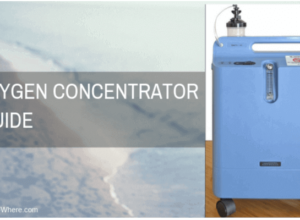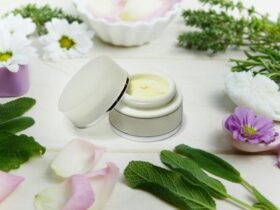Oxygen therapy solutions vary from large home concentrators or “stationary” unit for night-time or home use to portable oxygen concentrators (or POCs), which pulls oxygen directly from the atmosphere when you are at home or traveling. After coming into the market, portable oxygen concentrators became way better options than carrying those large cylinders around your home or wherever you go. It is easy to choose a POC, but there are a few factors that you will have to consider before buying one.
Difference between Portable Oxygen Concentrators and Home Concentrators
Portable Oxygen Concentrators:
Portable oxygen concentrators (or POCs) have been on the market for almost 20 years. They operate the same way as a home concentrator in that they are able to take air directly from the surroundings and convert it into medical-grade oxygen. They never run out of oxygen. Another benefit of POC is the freedom of movement it allows users. You can go on a walk or travel with a lightweight, portable oxygen concentrator. It requires no refills and can be charged with AC, DC, or batteries.
Home Concentrators:
Home Concentrator is a bulky stationary concentrator designed to provide medical-grade oxygen from 1 liter per minute to 5 liters per minute of oxygen flow. They can be installed in the room of the patient to provide oxygen therapy. Home Concentrator requires an AC power from the wall outlet to function. A long tube, typically up to 15.5 meters, is connected to a concentrator to provide oxygen to a cannula. Home Concentrators built with new technology are not as loud, consume power up to 200 watts, and can weigh up to 10 to 25 lbs.
Types of POCs
There are basically two types of portable oxygen concentrators, one is Pulse Dose Unit and the other is the Continuous Flow Unit.
- Continuous Flow Unit: This type of unit provides regular oxygen supply. These units do not use more than 3-4 liters of oxygen per minute, this helps to maintain a balance between convenience and efficiency i.e., portability and battery size. Due to the fact that it provides a continuous supply of oxygen, they need to be used with precaution to avoid wastage for patients who don’t need oxygen continuously all the time.
- Pulse Dose Unit: This type of unit senses the need for oxygen to the patient, after sensing, it provides short bursts or impulses for the patient to breathe. As the oxygen is supplied according to the needs of the patient, this unit doesn’t waste as much oxygen as the other unit. The capacity is related to the number of puffs and not to the number of liters.
How to choose the right Portable oxygen concentrators (POC)?
Your doctor or healthcare provider will suggest the right type of POC for you based on your health requirement. Your prescription form from a doctor (which is required to purchase POC) will have a note about the settings of the prescribed level, which is measured in liters per minute of oxygen flow. It is crucial that your POC meet the criteria of the doctor’s guidance. Make sure to get a recommendation from the doctor about the required size and capacity of the oxygen concentrator unit.
To choose the right oxygen concentrator, look at your prescription by doctor.
- If it says 3 LPM Continuous Flow, you need Continuous Flow Unit to provide a steady stream of oxygen.
- If it says 2 LPM Pulse or Conserving you need Pulse Dose Unit to provide on-demand oxygen supply based on breathing needs.
Working of Oxygen Concentrators
Our earth’s atmosphere only contains 21% of oxygen; the same goes for the air we breathe. The rest is 78% nitrogen and other gases. A portable oxygen concentrator separates oxygen and nitrogen from the atmosphere before providing the patient over 95% of pure oxygen. This is done by absorbing air through the filter and compressing it into one of the installed “Zeolite Towers”.
With the help of a valve system, nitrogen is released to the atmosphere, and pure oxygen is provided to inhale.
Features of Oxygen Concentrators
When you purchase an oxygen concentrator device, make sure it has great features. Here is the list of important features for a portable oxygen concentrator.
Oxygen Capacity: Bigger is not necessarily the better. Big size will make the oxygen concentrator less portable and difficult to carry around. Therefore, it is important to manage the size according to the need of oxygen supply and portability. If the user travels a lot then the bigger size won’t be convenient but as they are traveling, they will need more oxygen supply. Therefore keep in mind that a balance is very important. The most common flow setting is 2 lpm (Continuous Flow Unit). This setting is used by approximately 70% of oxygen users. Pulse Dose Unit can be used on settings of 1-3 or 1- 5 levels to suit the exertion levels.
Battery Life: It depends on the usage of the device, as mentioned above while traveling the battery consumption will be high, so a larger battery will be needed but it will also disturb the balance between size and convenience. Portable Oxygen Concentrators can function on AC (wall outlet), DC (car cigarette lighter) and Batteries. Some POCs have lithium ion rechargeable batteries that can last upto 8 hours. Battery life of oxygen concentrator varies according to the built of unit and the settings it is used on. A spare battery is always recommended while traveling via airplane, also, to pass the certifications the device should run twice the time of the flight. If you can install an extra outlet in your car, it would be very helpful for the patient.
Weight: Weight is an important feature to consider, there are machines available that can be carried as a backpack or they need to be kept on the ground all the time and can be moved with the help of wheels. A tank with a continuous supply will weigh around 10 to 20 pounds while the pulse dose tank’s weight may vary from 3 to 10 pounds. The new technology pulse oxygen concentrators are much lighter and weigh less than 2 lbs.
FAA Approval:
Most Portable Concentrators available on market are FAA approved and can be taken on flight. If the patient travels through airplanes a lot then it becomes important that the device is FAA approved. This should be checked while purchasing the POC. Every airline has different requirements for portable oxygen concentrator and their batteries. Make sure to check with them before purchasing the ticket.
Noise Level
Oxygen concentrators have noise level between 37 and 43 dBA. You can hear a very low hum noise when the device is turned on. Portable concentrators are much quieter than home concentrators due to their small size. The noise level of oxygen concentrator also depends on setting of the device that is being used. Note the dBA levels mentioned on the product specification to know the level of noise oxygen concentrator would make.
Warranty
It is expensive to purchase oxygen concentrators. Therefore, make sure that it has a warranty which will enable you to replace or get the device repaired by the manufacturer if it fails to function as specified. Oxygen concentrator manufacturers typically provide 3 years warranty. Prefer to buy a model with warranty because oxygen concentrators last for many years and it would be best to have the one with warranty to save the repair and replacement cost in future.
Does Medicare cover the purchase of Portable oxygen concentrators (POCs)?
It can be confusing to know if Medicare will reimburse the cost of oxygen concentrator because there is no easy Yes or No answer for that. Usually, oxygen therapy equipment is covered under Medicare through a long-term monthly rental contract which can last for five years. They are usually availed by new patients. Medicare providers get a monthly amount to provide meet the oxygen needs of patient. The
Medicare provider can allow home concentrator or a portable oxygen concentrator to meet the specific requirement of patient as prescribed by the doctor depending on the situation. But it is important to know that Medicare won’t reimburse out-of-pocket expenses or pay for the purchase or short-term rental of oxygen concentrator.
Medicare provider is not required to give patients any oxygen therapy devices including portable oxygen concentrators. They agree to provide a home concentrator and refillable oxygen tanks commonly to the patients through a Medicare provider on long term contract basis.
There are some supplemental insurance companies that cover partial or complete cost of purchase or rental of portable oxygen concentrator for qualifying patients who meet their terms and conditions requirement.
To make an informed decision contact your Medicare oxygen provider or Insurance provider to understand the coverage plan terms, offers and benefits they can provide you for purchase of oxygen concentrator.
Once you decide which oxygen concentrator is best for you check its ratings and reviews. Though the oxygen concentrators built with latest technology are best, each patient has specific medical needs. Make sure the oxygen concentrator meets your medical condition requirement.
It is best if the dealer is accredited by the BBB (Better Business Bureau). See if the dealer offers a trial program, so you can evaluate the oxygen concentrator and make sure it is exactly what you want before buying the device. If you don’t want to purchase the device, renting is also a good option to the test the oxygen concentrator.
Read More- Nebulizers or Inhalers? How to choose the best option.

I am a world enthusiast, pursuing engineering in Electronics. I write on health and travel niche occasionally. I have written for several tech blogs and news websites. I have also worked as a marketing advisor. When I am not working, I study or play video-games and have an extra slice of pizza.














Leave a Reply